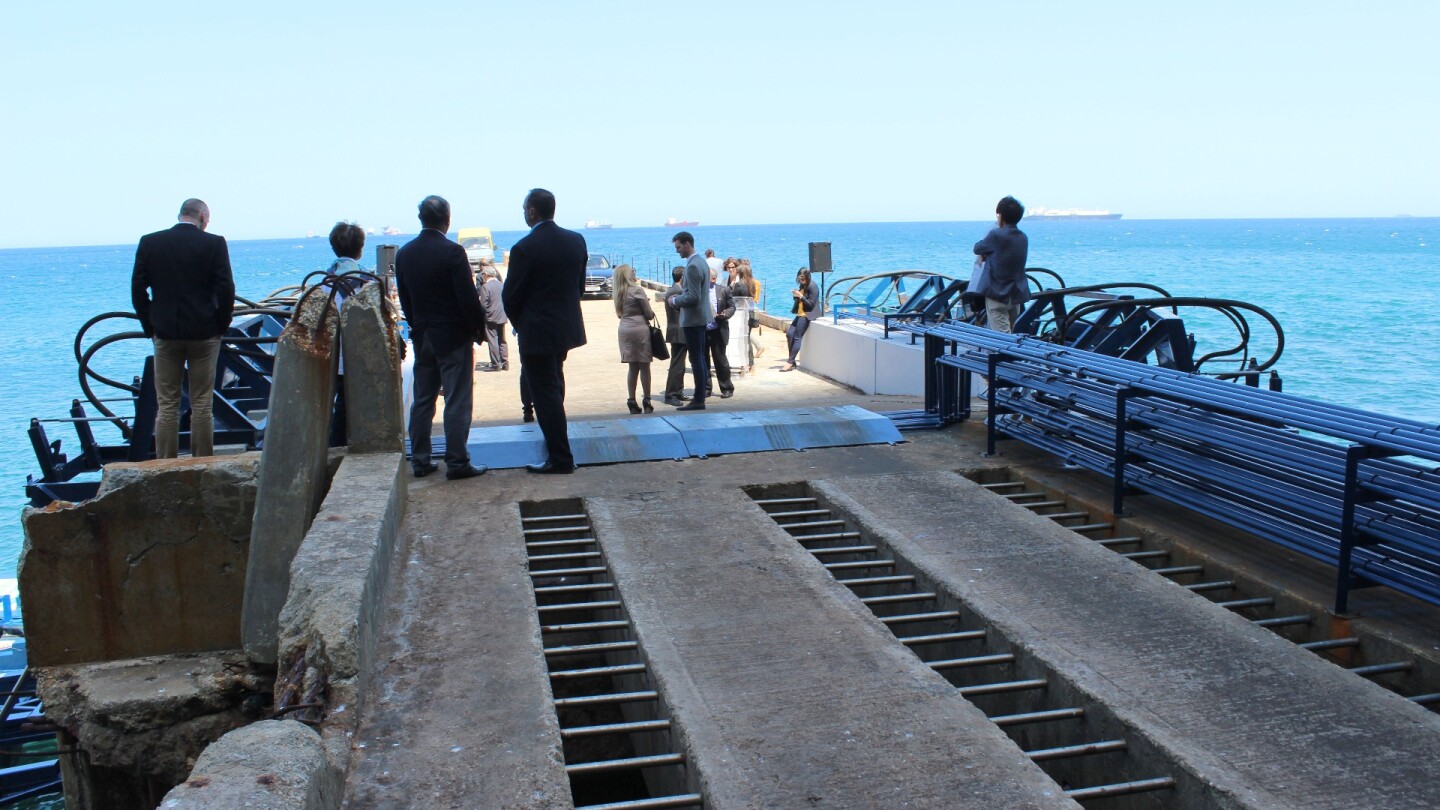Gizmag was in Gibraltar today at the ribbon cutting event for Eco Wave Power's (EWP) innovative wave energy station, installed on the ammunition jetty in the tiny-yet-iconic British territory. The event itself was brief, but its significance could be huge, marking a big moment for both Gibraltar, and a company with promising green energy tech, and big plans.
We've been following the Israel-based company's progress for years. First tested back in 2012, in a tank at Ukraine's Institute for Hydromechanics in Kiev, the solution captures energy by harnessing the rise and fall of the waves. The motion is converted into fluid pressure, which then spins a generator to produce electricity.
It's been a long road since then, with the team ticking off numerous tests – including stress testing storm trials in the Black Sea, and the creation of a demo station in Jaffa Port, Israel – to evaluate and improve the technology. Today marks a major achievement for the company, inaugurating a landmark power station, installed on Gibraltar's World War II ammunition jetty. The system is Europe's first grid-connected wave energy plant.

To get to the jetty, we took a short drive down the east coast of the territory, before walking down a dimly-lit, lengthy passage that took us underneath the iconic, limestone mass of the Rock of Gibraltar. Stepping out into the golden sunshine some five minutes later, the first thing that struck us about the buoy system is that it fitted in surprisingly well with its picturesque surroundings.
That could well be one of the biggest advantages of EWP's solution here – the visual impact of the station is low, thanks in part to its use of the historic jetty, and the buoys themselves aren't unattractive. If future sites are similarly well placed, then protests from locals about the buoys "ruining the view" – a routine complaint about off shore wind farms – should be minimal.
The ribbon cutting event itself was brief, with Gibraltar's Prime Minister Fabian Picardo saying a few words about the significance of the occasion, before hitting the button that sent the buoys crashing down into the calm waters below.

Despite the slow bobbing motion of the floats during today's demo, EWP claims that the station efficiently gathers energy year round, from tranquil waters to less beach-friendly weather. It's only in the stormiest conditions that the system has to cease operations, being lifted back up from the waves to avoid damage.
Stepping back into the darkness of the tunnel, we took a look at the rest of the equipment that completes the green energy set up. Inside a shipping container to the side of the tunnel are the guts and brains of the station. A mass of hydraulic accumulators, pipes and generators – the entire system is controlled via a touch-screen interface.
According to EWP's on-site engineers, the station is designed to be largely automated, running with as little input as possible. Full manual control is available however, with the interface allowing engineers to complete required actions, such as raising the buoys out of the water. If you're not a big fan of touch controls, then you'll be happy to learn that there's also a big, reassuringly bright red "emergency stop" button on the opposite side of the enclosure.

Placing all equipment but the buoys themselves out and away from the water makes maintenance a breeze, and minimizes the chance of polluting the surrounding water should the equipment break down. For the buoys themselves, the company has employed anti-corrosion measures it claims will protect the metal for some 30 years before an overhaul is needed.
The power station is currently capable of producing 100 KW, but the team plans to increase the amount of energy being generated, up to a 5 MW target by 2020. At that point, the station will be producing an impressive 15 percent of the territory's energy needs.
That increase will require quite a lot of extra work. While EWP claim that the hidden away control room won't need to be significantly expanded, the number of buoys will increase significantly. The exact configuration for the rest of the jetty is a work in progress.

The ammunition jetty power station is just the start for EWP. We already knew that the company has been working on setting up a wave power station in China, and we learned today that it'll be heading to Mexico for its next big endeavour. Still awaiting government approval, the planned station would be far larger than the one in Gibraltar, at 25 MW.
Overall, the low-impact nature of the energy solution, combined with its easy-access maintenance and long life span could allow it to have a big impact across the globe. Today, EWP quoted World Energy Council figures, stating that the market potential for wave energy currently stands at a staggering one trillion US dollars.
There's a huge amount of room for growth in the sector, and while Gibraltar's new power station is small, it could well be a glimpse at much bigger things in the company's future.
The floats can be seen in action in the video below.
Source: Eco Wave Power




















